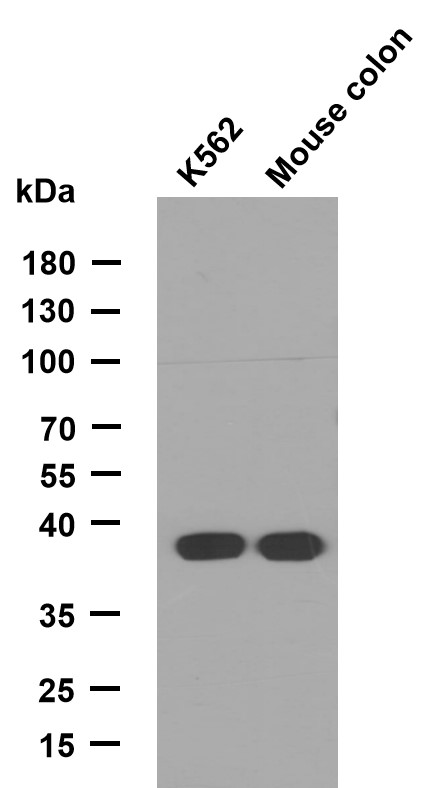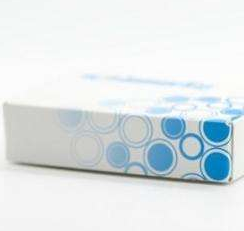PARK7 Polyclonal Antibody
- Catalog No.:YT3592
- Applications:WB;IHC;IF;ELISA
- Reactivity:Human;Mouse
- Target:
- PARK7
- Fields:
- >>Parkinson disease;>>Pathways of neurodegeneration - multiple diseases
- Gene Name:
- PARK7
- Protein Name:
- Protein DJ-1
- Human Gene Id:
- 11315
- Human Swiss Prot No:
- Q99497
- Mouse Gene Id:
- 57320
- Mouse Swiss Prot No:
- Q99LX0
- Immunogen:
- The antiserum was produced against synthesized peptide derived from human DJ-1. AA range:21-70
- Specificity:
- PARK7 Polyclonal Antibody detects endogenous levels of PARK7 protein.
- Formulation:
- Liquid in PBS containing 50% glycerol, 0.5% BSA and 0.02% sodium azide.
- Source:
- Polyclonal, Rabbit,IgG
- Dilution:
- WB 1:500 - 1:2000. IHC 1:100 - 1:300. IF 1:200 - 1:1000. ELISA: 1:10000. Not yet tested in other applications.
- Purification:
- The antibody was affinity-purified from rabbit antiserum by affinity-chromatography using epitope-specific immunogen.
- Concentration:
- 1 mg/ml
- Storage Stability:
- -15°C to -25°C/1 year(Do not lower than -25°C)
- Other Name:
- PARK7;Protein DJ-1;Oncogene DJ1;Parkinson disease protein 7
- Observed Band(KD):
- 22kD
- Background:
- The product of this gene belongs to the peptidase C56 family of proteins. It acts as a positive regulator of androgen receptor-dependent transcription. It may also function as a redox-sensitive chaperone, as a sensor for oxidative stress, and it apparently protects neurons against oxidative stress and cell death. Defects in this gene are the cause of autosomal recessive early-onset Parkinson disease 7. Two transcript variants encoding the same protein have been identified for this gene. [provided by RefSeq, Jul 2008],
- Function:
- disease:Defects in PARK7 are the cause of autosomal recessive early-onset Parkinson disease 7 (PARK7) [MIM:606324, 168600]. Parkinson disease (PD) is a complex, multifactorial disorder that typically manifests after the age of 50 years, although early-onset cases (before 50 years) are known. PD generally arises as a sporadic condition but is occasionally inherited as a simple mendelian trait. Although sporadic and familial PD are very similar, inherited forms of the disease usually begin at earlier ages and are associated with atypical clinical features. PD is characterized by bradykinesia, resting tremor, muscular rigidity and postural instability, as well as by a clinically significant response to treatment with levodopa. The pathology involves the loss of dopaminergic neurons in the substantia nigra and the presence of Lewy bodies (intraneuronal accumulations of aggregated proteins),
- Subcellular Location:
- Cell membrane ; Lipid-anchor . Cytoplasm . Nucleus . Membrane raft . Mitochondrion . Endoplasmic reticulum . Under normal conditions, located predominantly in the cytoplasm and, to a lesser extent, in the nucleus and mitochondrion. Translocates to the mitochondrion and subsequently to the nucleus in response to oxidative stress and exerts an increased cytoprotective effect against oxidative damage (PubMed:18711745). Detected in tau inclusions in brains from neurodegenerative disease patients (PubMed:14705119). Membrane raft localization in astrocytes and neuronal cells requires palmitoylation. .
- Expression:
- Highly expressed in pancreas, kidney, skeletal muscle, liver, testis and heart. Detected at slightly lower levels in placenta and brain (at protein level). Detected in astrocytes, Sertoli cells, spermatogonia, spermatids and spermatozoa. Expressed by pancreatic islets at higher levels than surrounding exocrine tissues (PubMed:22611253).
- June 19-2018
- WESTERN IMMUNOBLOTTING PROTOCOL
- June 19-2018
- IMMUNOHISTOCHEMISTRY-PARAFFIN PROTOCOL
- June 19-2018
- IMMUNOFLUORESCENCE PROTOCOL
- September 08-2020
- FLOW-CYTOMEYRT-PROTOCOL
- May 20-2022
- Cell-Based ELISA│解您多样本WB检测之困扰
- July 13-2018
- CELL-BASED-ELISA-PROTOCOL-FOR-ACETYL-PROTEIN
- July 13-2018
- CELL-BASED-ELISA-PROTOCOL-FOR-PHOSPHO-PROTEIN
- July 13-2018
- Antibody-FAQs
- Products Images
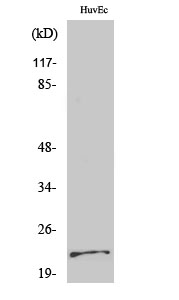
- Western Blot analysis of various cells using PARK7 Polyclonal Antibody
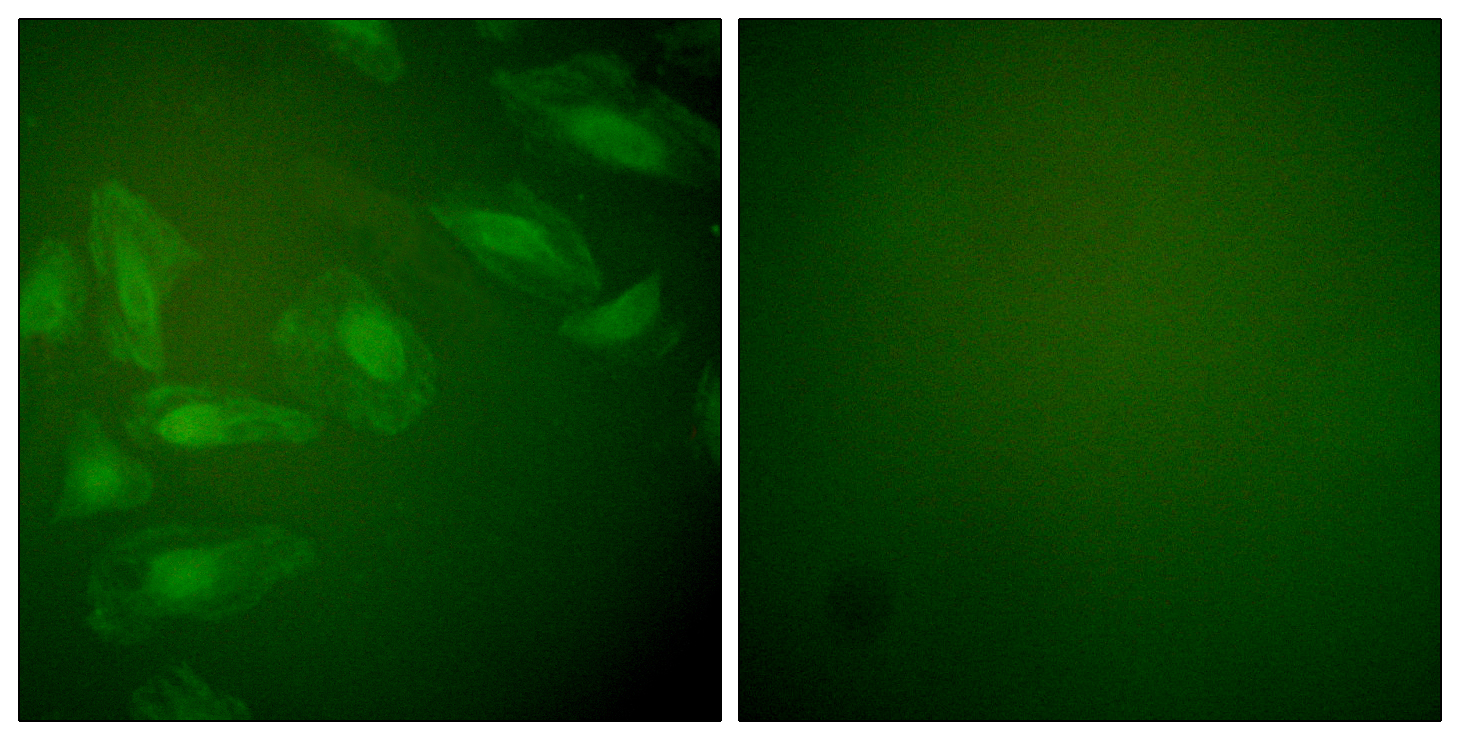
- Immunofluorescence analysis of HeLa cells, using DJ-1 Antibody. The picture on the right is blocked with the synthesized peptide.

- Immunohistochemistry analysis of paraffin-embedded human lung carcinoma tissue, using DJ-1 Antibody. The picture on the right is blocked with the synthesized peptide.
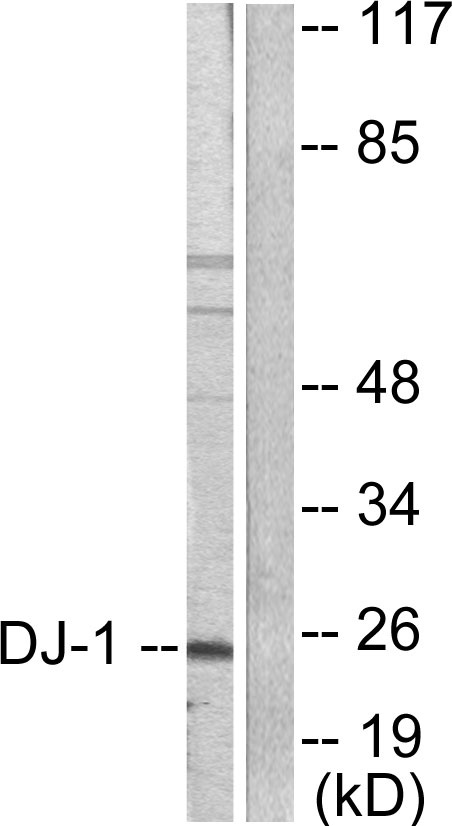
- Western blot analysis of lysates from HUVEC cells, using DJ-1 Antibody. The lane on the right is blocked with the synthesized peptide.
